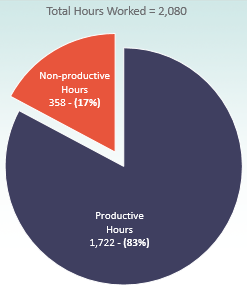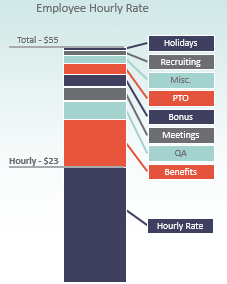 By Andrea Romero, RHIA, Chief Operating Officer, himagine solutions
By Andrea Romero, RHIA, Chief Operating Officer, himagine solutions
Twitter: @himagineInc
“Outsourced coders are too expensive”, “My internal coding resources are much less expensive than external coders” are statements I hear frequently from HIM leaders. Having worked on both sides of the fence as a HIM department lead on the provider side and now as Chief Operating Officer for himagine it struck me; has this cost gap between internal and external coders ever been quantified or is this more of a perception?
As I wrote in a previous blog post, as HIM leaders it is paramount that we evolve our analytical skills to align ourselves better with our revenue cycle peers. Rather than simply accepting this narrative I decided to take a deeper dive into this area and practice what I preached!
What I quickly realized is that if you are simply comparing a HIM professionals’ “pay rate” then the gap certainly is fairly sizable. However, there are latent costs beyond a simple hourly rate that are typically not taken into account. Here are few examples:
- Benefits — most hospitals have rich benefit plans that can increase a coders hourly rate by upwards of 30%.
- Quality assurance — we audit all of our coders at himagine on behalf of our clients. I assume you audit your internal coders as well. In addition to needing auditing resources to perform the audits you probably need software to manage the audits and reporting tools to publish and socialize the results. Those costs add up pretty fast.
- Education — we have a dedicated HIM Education team at himagine comprised of 8 manager level professionals whose job it is to help continuously develop and train our coders. Do you have a team of educators at your facility? Most places do. Are you accounting for them? These resources do not report to you so you do not bear the cost? That is immaterial as the costs are real and must be considered. An additional cost to factor in is educational modules, like Elsevier, to build a curriculum.
- Miscellaneous — we all deal with employee turnover. Do you have internal recruiters that help identify candidates? That is a real cost as well. What about incentive compensation? Historically at himagine we have offered retention or signing bonuses to our HIM professionals. Those costs need to be factored in as well.
As a provider of coding services to hospitals, it is upon us to ensure that we are meeting the demands of our clients. HIM departments do not slow down for holidays, PTO, or mandatory meetings so we have to staff appropriately. This got me thinking, what is the actual productive time of a coder? None of us are 100% productive and work 2,080 in a year with only weekends off. We have family vacations, sick days, internal meetings, etc. that take us away from core job function. As you see below, in my estimation, a coder is conservatively productive 83% of the time when factoring these in. What about the other 17%? We are still paying the coder even though they are not working. That non-productive time is a cost.

So how does this all add up? Here is the projected math on my end. Accounting for all of these factors, the pay rate is only 40% of the total cost. So a good rule of thumb would be to divide your pay rate by 0.40 to get a “real” sense of what the cost is. Suddenly the gap between an internal and external resource is not as wide as originally perceived.

OK, enough analysis for now. What do you think? Are my assumptions and calculations reasonable? Have I missed anything. I would love to hear your feedback.
This article was originally published on himagine solutions and is republished here with permission.
